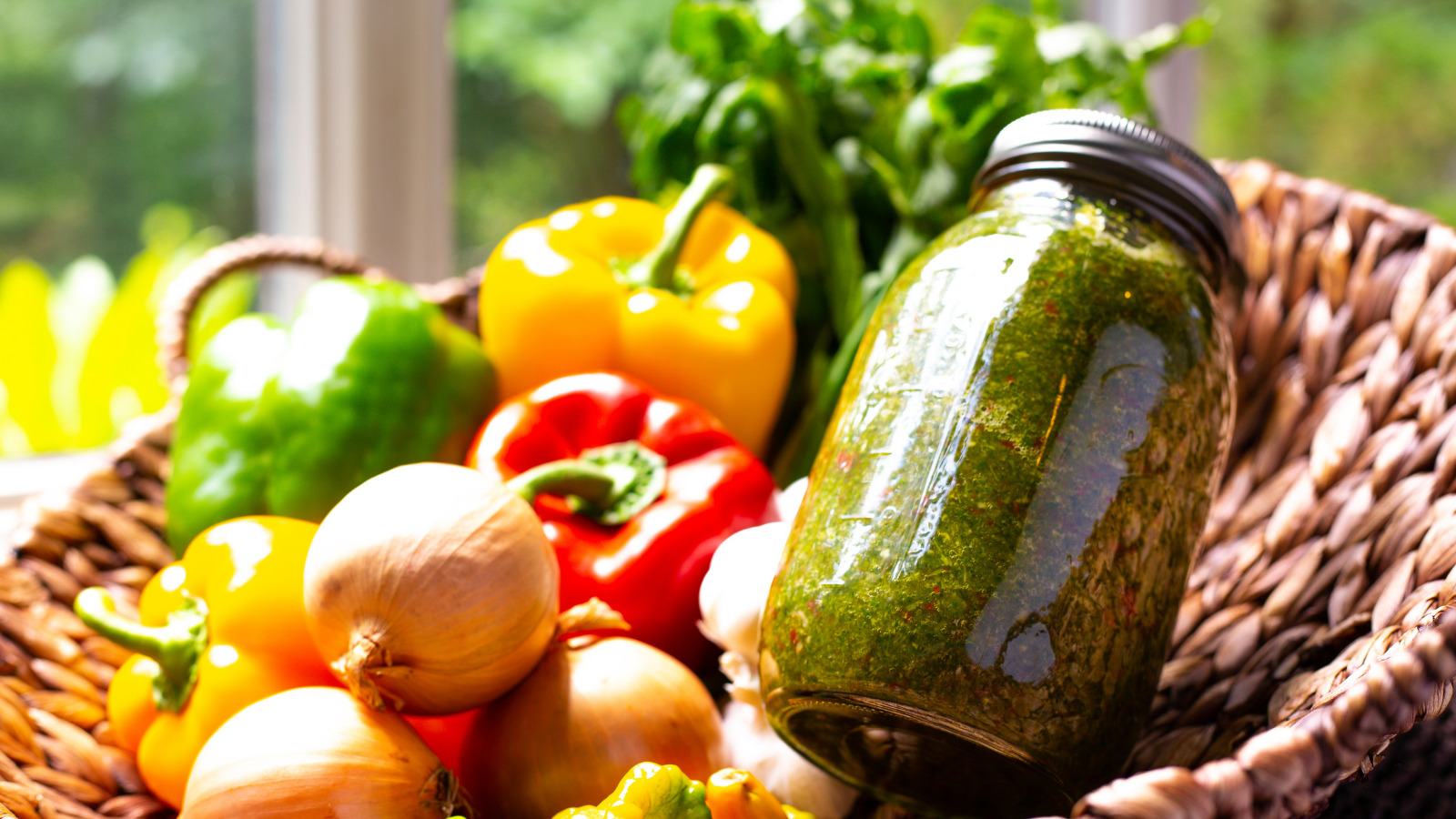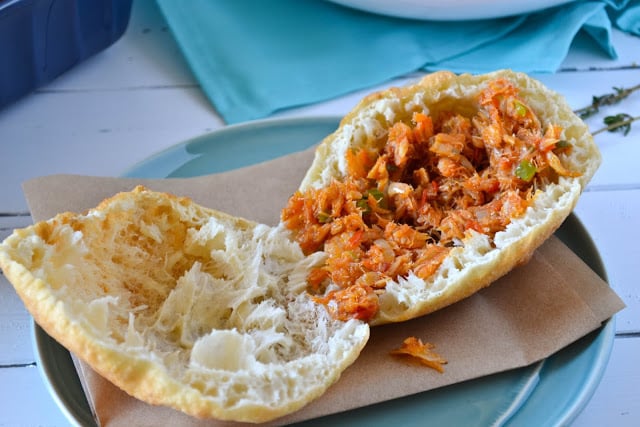Sofrito is a cornerstone of Caribbean and Latin American cuisine, a flavorful blend of herbs, spices, and aromatics that serves as the base for countless traditional dishes. Its origins span centuries, tracing back to the early influences of Spanish settlers, who brought the technique to the Caribbean, where it evolved with local ingredients and flavors.
Today, Sofrito is much more than just a cooking method—it’s a cultural symbol, representing the rich culinary traditions of the Caribbean and beyond. From stews and soups to marinades and rice dishes, Sofrito’s versatility and depth of flavor make it an essential ingredient in kitchens across the world. Let’s explore the origins of Sofrito and it’s reprasentation in Caribbean traditions!

What is Sofrito?
Sofrito is a rich, aromatic blend of ingredients that forms the foundation of many dishes in Caribbean, Latin American, and Spanish cuisine. Typically made from a combination of onions, garlic, bell peppers, and herbs, Sofrito is sautéed in oil to release its flavors before being added to stews, soups, rice, or meat dishes.
Although its exact ingredients can vary by region, the core idea remains the same: Sofrito enhances the depth and complexity of a dish, providing a flavor-packed base that ties all the ingredients together. In some cultures, tomatoes or tomato paste are added to the mix, while others may emphasize herbs like cilantro and culantro, creating slight variations that reflect the local tastes and ingredients available.

Origins of Sofrito in Caribbean Cuisine
The origins of Sofrito in Caribbean cuisine can be traced back to Spanish colonization in the 15th century. Spanish settlers brought with them their own cooking techniques, including the use of sofrito—a slow-cooked sauce made of garlic, onions, and herbs. As this culinary tradition reached the Caribbean, it adapted to local tastes and ingredients, creating a unique version of Sofrito that reflected the region’s rich, diverse culture.
Caribbean Sofrito took on new flavors as indigenous Taino techniques were incorporated, and African slaves contributed their own culinary traditions. The result was a vibrant fusion of flavors, where local herbs such as culantro and peppers became essential ingredients.
Sofrito quickly spread across the islands, becoming a staple in Puerto Rican, Dominican, and Cuban cuisines. This evolution of Sofrito is a testament to the Caribbean’s cultural melting pot, blending Spanish, African, and indigenous influences to create a flavor base that is now synonymous with Caribbean cooking.

Traditional Sofrito Ingredients
Traditional Sofrito is a blend of aromatic ingredients that come together to create a flavorful base used in many Caribbean dishes. While the exact ingredients can vary by region or household, the following components are typically essential for an authentic Caribbean Sofrito:

- Herbs: Cilantro and Culantro
- Cilantro and culantro are cornerstone herbs in traditional Caribbean Sofrito. Though often used interchangeably, culantro offers a stronger, more pungent flavor compared to the lighter, citrusy notes of cilantro. Culantro’s intensity makes it a popular choice in Puerto Rican Sofrito, where it adds depth to dishes like arroz con gandules (rice with pigeon peas). Cilantro, on the other hand, brings a fresh brightness to the mix, balancing the bolder flavors of garlic and peppers.
- Aromatics: Garlic, Onion, and Peppers
- Garlic, onions, and peppers form the aromatic trio that gives Sofrito its signature flavor. In most traditional Caribbean recipes, green bell peppers are used for their mild sweetness, but red or other varieties can be substituted for a sweeter or slightly bitter note. Garlic adds a sharp, pungent flavor, while onions provide a sweet, savory balance. When sautéed together, these aromatics release their natural sugars, creating a rich and flavorful base that enhances everything from stews to rice dishes.
- Spices: Cumin, Oregano, and Annatto
- The spices in Sofrito not only add flavor but also contribute to its vibrant color. Cumin provides a warm, earthy undertone, while oregano adds a hint of bitterness that complements the sweeter ingredients like onions and peppers. Annatto, also known as achiote, is often used to give Sofrito its signature reddish-orange hue and a subtle peppery taste. These spices, when combined with fresh herbs and aromatics, create a well-rounded, flavorful foundation that enhances the complexity of Caribbean dishes.
The Cultural Significance of Sofrito in Caribbean Dishes
Sofrito is more than just an ingredient in Caribbean cooking—it is a reflection of the region’s history, culture, and identity. Throughout the Caribbean, Sofrito serves as the flavorful foundation for countless traditional dishes that are passed down through generations. Whether it’s the stews served at family gatherings, the marinades used in festive feasts, or the rice and beans prepared for everyday meals, Sofrito is a key component of the culinary experience.
The use of Sofrito transcends the kitchen; it is deeply embedded in the region’s cultural fabric. In Puerto Rico, for instance, the preparation of Sofrito is often a family affair, with recipes varying from household to household, each with its own unique twist. In the Dominican Republic and Cuba, Sofrito is similarly integral, acting as the base for national dishes like sancocho and ropa vieja.
The preparation and use of Sofrito link the past to the present, keeping alive the culinary traditions brought to the Caribbean by Spanish settlers and shaped by African and indigenous Taino influences.

Sofrito’s cultural significance lies not just in its flavor, but in its ability to bring people together. It is a symbol of community, heritage, and pride for many Caribbean families, embodying the heart and soul of their cuisine.
Sofrito’s Role in Puerto Rican Cuisine
Sofrito is a key element in Puerto Rican cooking, used in almost every savory dish. It’s often made without tomatoes (known as “Recaito”) and features fresh cilantro and culantro. This herb-based Sofrito is commonly found in dishes like arroz con gandules and asopao. Sofrito is not only a flavor base but also a cultural symbol, passed down through generations.

Dominican and Cuban Variations of Sofrito
- Dominican Sofrito: Known for a stronger herb flavor with cilantro, onions, and garlic, it sometimes includes sour orange juice or vinegar for brightness.
- Cuban Sofrito: Incorporates tomatoes, giving it a sweeter, richer flavor, often used in dishes like ropa vieja and picadillo.

Both variations reflect the unique culinary histories of their regions, enhancing the depth of flavor in local dishes.
The Influence of Spanish, African, and Taino Flavors
Sofrito in the Caribbean was shaped by Spanish settlers, who introduced the base recipe, African slaves who added spices like cumin and annatto, and the indigenous Taino people who contributed local herbs like ají dulce and culantro. This blend of cultural influences transformed Sofrito into a symbol of Caribbean cuisine.
Key Techniques for Making the Perfect Sofrito
Creating the perfect Sofrito requires not only the right combination of ingredients but also the proper techniques to bring out their flavors. From preparing the vegetables to storing the final product, each step plays a crucial role in achieving the rich, aromatic base that defines Caribbean cuisine. Mastering these techniques will ensure that your Sofrito enhances any dish it touches.
Preparing the Vegetables: Chopping, Mincing, and Sautéing
Chop or mince garlic, onions, peppers, and herbs into small, uniform pieces. For a smoother texture, use a food processor; for a rustic feel, hand-chop. Sauté the vegetables slowly in olive oil over medium heat, allowing them to soften and release their flavors, creating a rich base for dishes.
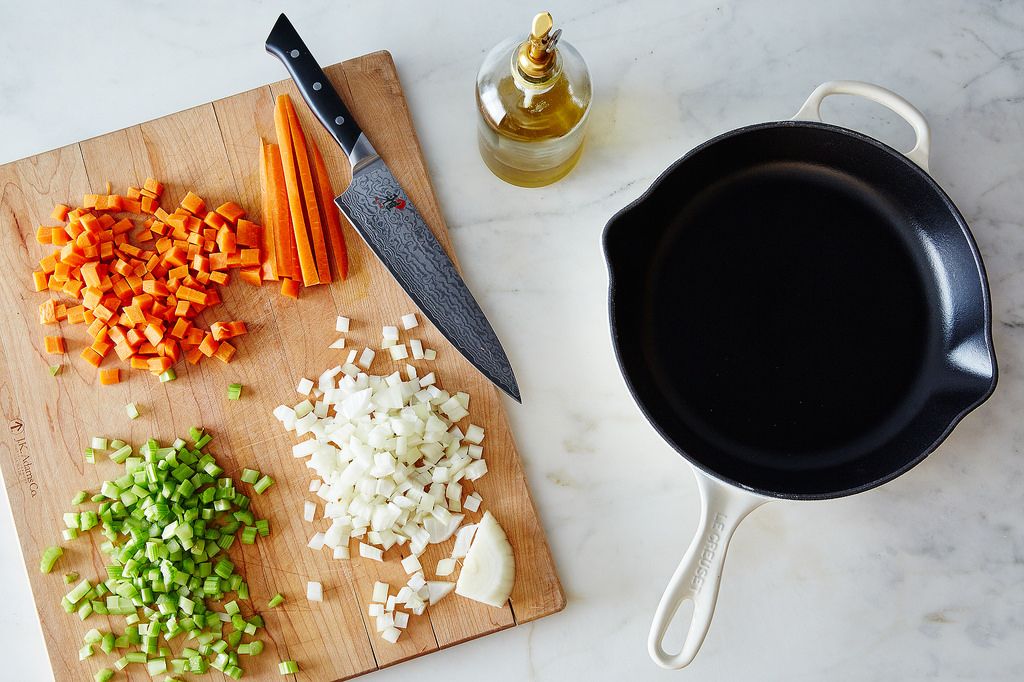
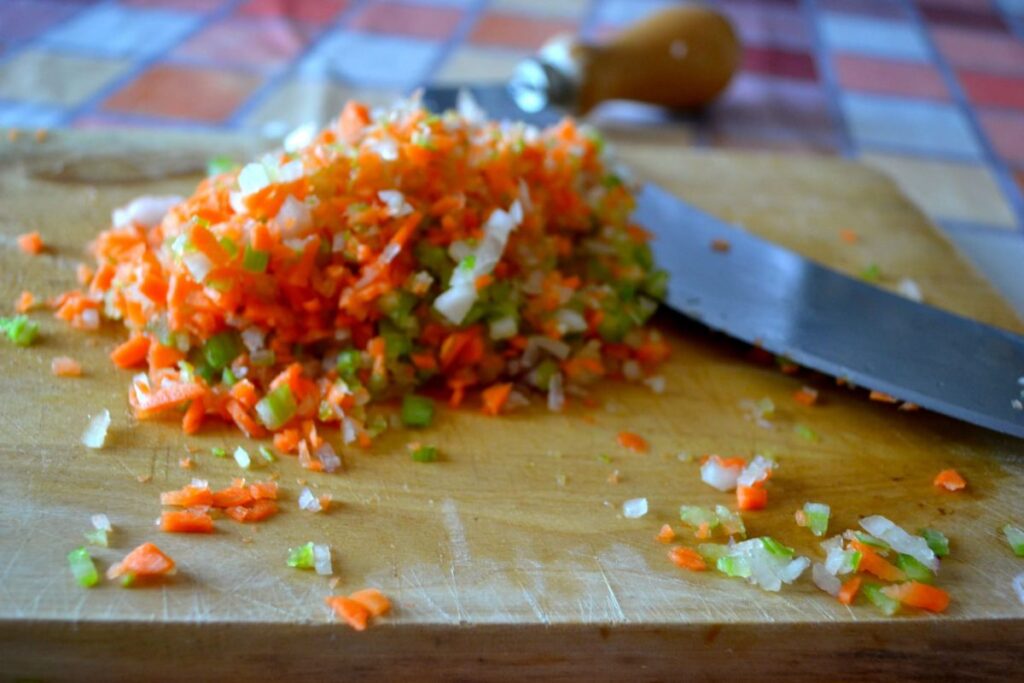
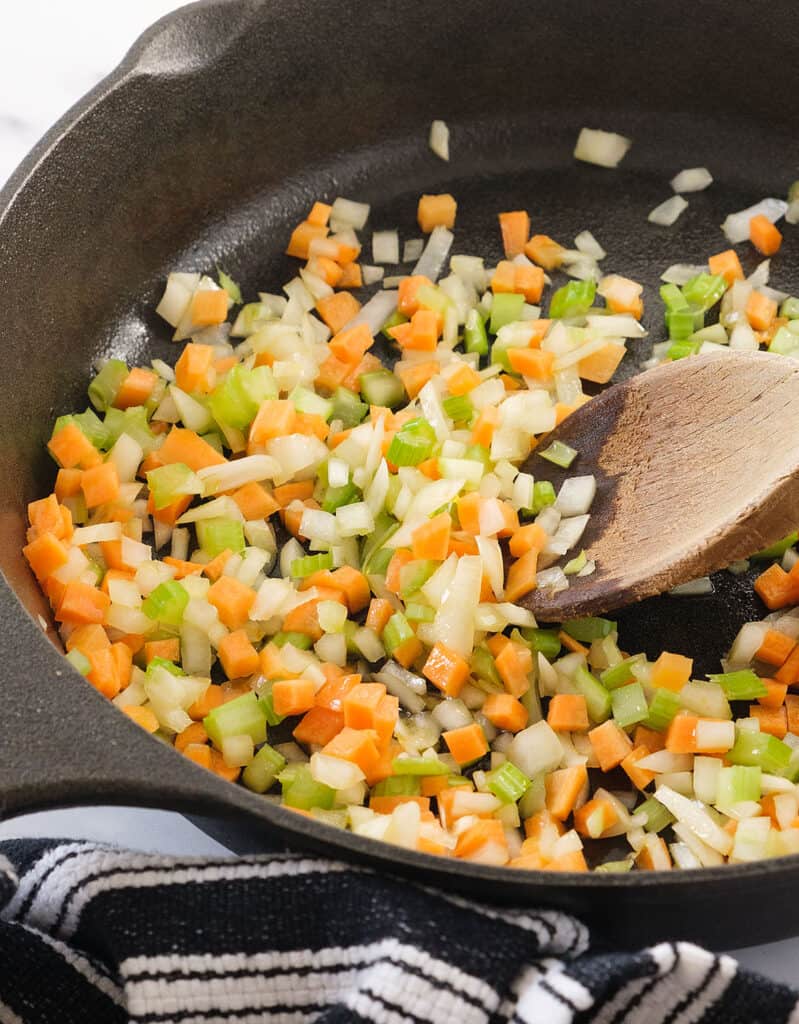
- Importance of Freshness and Quality
Fresh herbs and high-quality vegetables are essential for vibrant Sofrito. Using stale or dried ingredients can result in dull flavors, so it’s best to use fresh, locally sourced produce when available. - Blending Techniques: Smooth vs. Chunky Sofrito
Sofrito can be made smooth or chunky, depending on your preference. Chunky Sofrito works well in stews and rice dishes, while a smoother Sofrito is ideal for sauces or marinades, blending easily into liquids. - Storing Sofrito: Preserving Flavors
Store Sofrito in the fridge for up to a week in an airtight container or freeze it in small portions. Frozen Sofrito lasts up to three months, retaining its flavor. You can thaw it in the fridge or use frozen directly in your dishes.
Versatile Uses of Sofrito in Caribbean Cooking
Sofrito’s versatility is what makes it a treasured staple in Caribbean kitchens. Whether used as a base for hearty stews, flavoring for rice dishes, or a marinade for meats, Sofrito adds a burst of flavor that elevates every meal. Its ability to enhance both vegetarian and meat-based dishes alike makes it an essential ingredient across a wide variety of Caribbean recipes. Below are some of the key ways Sofrito can be used in Caribbean cooking.
As a Base for Stews and Soups
In many Caribbean households, Sofrito is the starting point for rich stews and soups. Dishes like Puerto Rican sancocho (a meat and vegetable stew) and Dominican asopao (a soupy rice dish) rely on the deep, aromatic flavors of Sofrito to form the foundation of the broth.
By sautéing the Sofrito first, the onions, garlic, peppers, and herbs infuse the oil with their flavors, creating a rich base to which meats, vegetables, and other seasonings are added. This technique allows Sofrito to permeate the entire dish, enhancing every bite with its complex flavors.

Adding Sofrito to Rice Dishes
Sofrito is often used to flavor rice dishes like arroz con gandules (rice with pigeon peas) and arroz con pollo (chicken and rice). To incorporate Sofrito into rice, it’s sautéed in oil at the beginning of the cooking process, allowing the flavors to meld with the grains.
The Sofrito provides a savory, herbaceous note to the rice, turning a simple side dish into a flavorful centerpiece. Its use in rice dishes is a signature of many Caribbean meals, where rice often accompanies meat, seafood, or beans.

Marinades for Meat, Poultry, and Fish
Sofrito is also an excellent marinade for meats, poultry, and fish. Its robust flavors penetrate proteins, creating a depth of flavor that complements Caribbean spices and cooking methods. For dishes like pollo guisado (stewed chicken) or grilled fish, Sofrito is mixed with vinegar, citrus juice, or oil to create a flavorful marinade.
The acidity helps to tenderize the meat, while the herbs and aromatics infuse it with complex, savory notes. Whether used for slow-cooking, grilling, or baking, Sofrito ensures that each bite is rich with Caribbean flavor.

Enhancing Vegetarian and Vegan Dishes
Sofrito’s bold flavors also make it ideal for vegetarian and vegan dishes. It can be added to beans, lentils, and vegetables to create deeply flavorful, satisfying meals. In dishes like habichuelas guisadas (stewed beans) or vegetable-based soups, Sofrito acts as the flavor base, bringing a richness that complements plant-based ingredients.
The combination of garlic, onions, peppers, and herbs helps elevate simple legumes and vegetables, turning them into hearty, flavorful dishes that are staples in many Caribbean households.

Regional Variations of Sofrito Across the Caribbean
While Sofrito is a common flavor base throughout the Caribbean, each island has its own version, influenced by local ingredients and cultural preferences. From the green Sofrito of Puerto Rico to the tomato-rich version in Cuba, these regional variations reflect the diversity of Caribbean cuisine. Understanding these differences not only highlights the adaptability of Sofrito but also celebrates the unique culinary traditions of each island.
Puerto Rican Sofrito: Recaito vs. Traditional
- Recaito: Green herb-based Sofrito made without tomatoes, focusing on cilantro and culantro flavors.
- Traditional Sofrito: Includes tomatoes or tomato paste, giving it a reddish hue and a slightly sweeter flavor.
- Both versions are key in Puerto Rican dishes like stews, rice, and beans, with the choice depending on personal preference and the dish.

Cuban Sofrito: The Tomato Twist
- Cuban Sofrito: Features tomatoes, giving it a deep red color and sweet, tangy flavor.
- Used as the base for iconic dishes like ropa vieja and picadillo.
- Tomatoes add richness and balance, complementing the savory ingredients commonly found in Cuban cuisine.

Dominican Sofrito: Cilantro and Sour Orange
- Dominican Sofrito: Known for its cilantro base and the addition of sour orange juice or vinegar for a citrusy brightness.
- The sour orange adds a refreshing acidity, cutting through the richness of dishes like locrio and sancocho.
- Reflects the vibrant, tropical flavors of Dominican cuisine and its local ingredients.

Creating Your Own Caribbean Sofrito Recipe
Making your own Sofrito is a rewarding way to bring authentic Caribbean flavors into your kitchen, while also tailoring the recipe to suit your taste. Whether you prefer a smoother, herb-heavy base or a chunky, tomato-rich mix, the beauty of Sofrito lies in its versatility. By choosing the right ingredients and adjusting their proportions, you can create a Sofrito that reflects both traditional Caribbean flavors and your personal preferences.

Choosing the Right Ingredients Based on Your Taste
The key to making a Sofrito that suits your taste lies in selecting the right combination of herbs, aromatics, and spices. If you prefer a brighter, more herbaceous Sofrito, focus on fresh cilantro and culantro as the base, and use green bell peppers for a milder flavor. For a richer, deeper Sofrito, include tomatoes or tomato paste, and add a dash of cumin or annatto for warmth.
Don’t be afraid to experiment with the proportions of these ingredients to create a Sofrito that aligns with your taste. You can go heavier on the garlic if you love pungent flavors, or add extra peppers if you want more sweetness or heat. The goal is to balance these ingredients in a way that enhances your cooking style and the dishes you plan to make.
Adjusting the Heat: Sweet vs. Hot Peppers
The type of peppers you choose for your Sofrito will greatly influence its level of heat. For a mild, sweet flavor, use bell peppers, which are commonly found in many traditional Sofrito recipes. If you prefer a spicier Sofrito, you can substitute bell peppers with hotter varieties such as ají caballero or habanero peppers, both of which are popular in the Caribbean.
If you’re unsure about the heat level, start by adding a small amount of hot pepper to the Sofrito and adjust according to taste. This will allow you to control the spiciness while still retaining the balance of flavors from the other ingredients.

Experimenting with Herbs: Basil, Parsley, or Thyme
While cilantro and culantro are the traditional herbs used in Sofrito, you can experiment with other herbs to create a flavor that is uniquely your own. Fresh basil adds a sweet, slightly peppery note, while parsley brings a fresh, clean flavor that can lighten the richness of the other ingredients. Thyme, often used in Caribbean cooking, adds an earthy depth that pairs well with both vegetarian and meat-based dishes.

When experimenting with herbs, start by adding small amounts and adjusting to taste. These herbs can complement the traditional flavor of Sofrito without overwhelming the other ingredients, allowing you to create a balance that suits your personal preference.
Step-by-Step Guide: Making Authentic Sofrito at Home
Making Sofrito at home is simple and rewarding. Follow these steps to create an authentic Caribbean Sofrito that can be used in a variety of dishes:
- Prepare the ingredients: Gather fresh cilantro, culantro, garlic, onions, bell peppers (or a mix of hot and sweet peppers, depending on your preference), and any other herbs or spices you wish to include.
- Chop the vegetables: Roughly chop the onions, peppers, and garlic. For a chunkier Sofrito, leave the pieces larger. For a smoother texture, finely chop or blend the ingredients in a food processor.
- Sauté the ingredients: Heat olive oil in a pan over medium heat. Add the chopped vegetables and herbs, and sauté slowly, allowing the ingredients to soften and release their flavors. Be careful not to burn the garlic.
- Blend (optional): If you prefer a smoother Sofrito, transfer the sautéed mixture to a blender and blend until it reaches your desired consistency. For a chunkier Sofrito, you can leave it as is.
- Store the Sofrito: Once cooled, transfer the Sofrito to an airtight container. Store it in the fridge for up to one week, or freeze it in small portions for longer storage.
By following these steps, you’ll have a flavorful base ready to enhance your favorite Caribbean dishes
Tips for Achieving the Perfect Balance of Flavors
Achieving the perfect balance in your Sofrito is key to unlocking its full potential in dishes. Here are a few tips to help you refine your recipe:
- Start small with strong flavors: Ingredients like garlic, hot peppers, and culantro can quickly overpower the other flavors. Begin with smaller amounts and increase gradually until you reach the desired intensity.
- Taste as you go: While sautéing your ingredients, taste the Sofrito periodically to ensure the flavors are balanced. This will help you adjust seasonings and herbs while the ingredients are still cooking.
- Balance acidity and sweetness: If your Sofrito includes tomatoes or tomato paste, make sure to balance the natural acidity with a touch of sweetness, such as a small pinch of sugar or a sweeter variety of pepper.
Frequently Asked Questions About Sofrito
Disclosure: Our blog contains affiliate links to products. We may receive a commission for purchases made through these links. However, this does not impact our reviews and comparisons. We try our best to keep things fair and balanced, in order to help you make the best choice for you.

